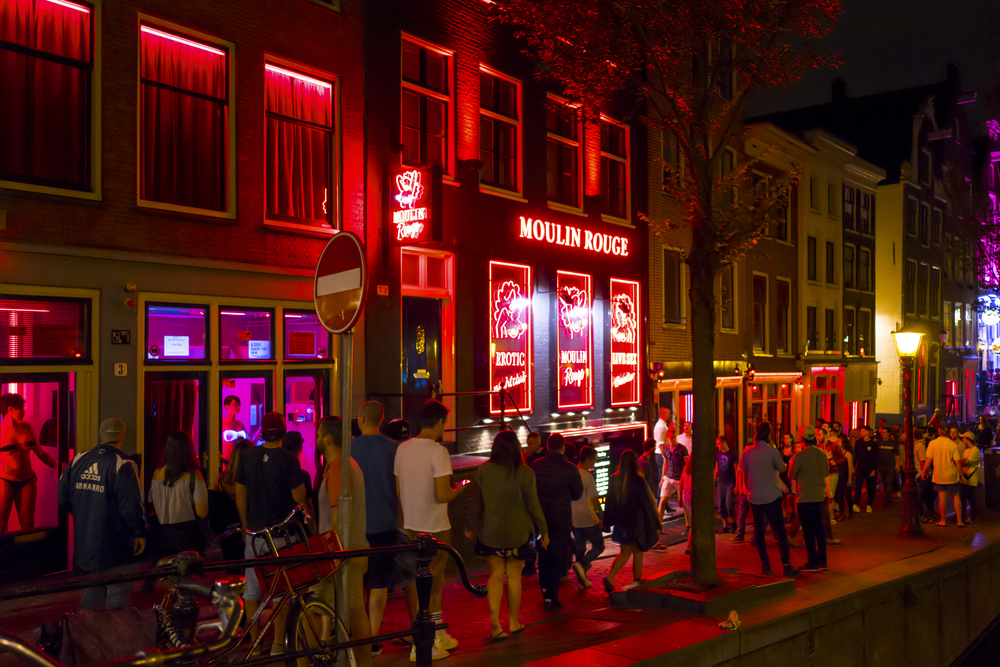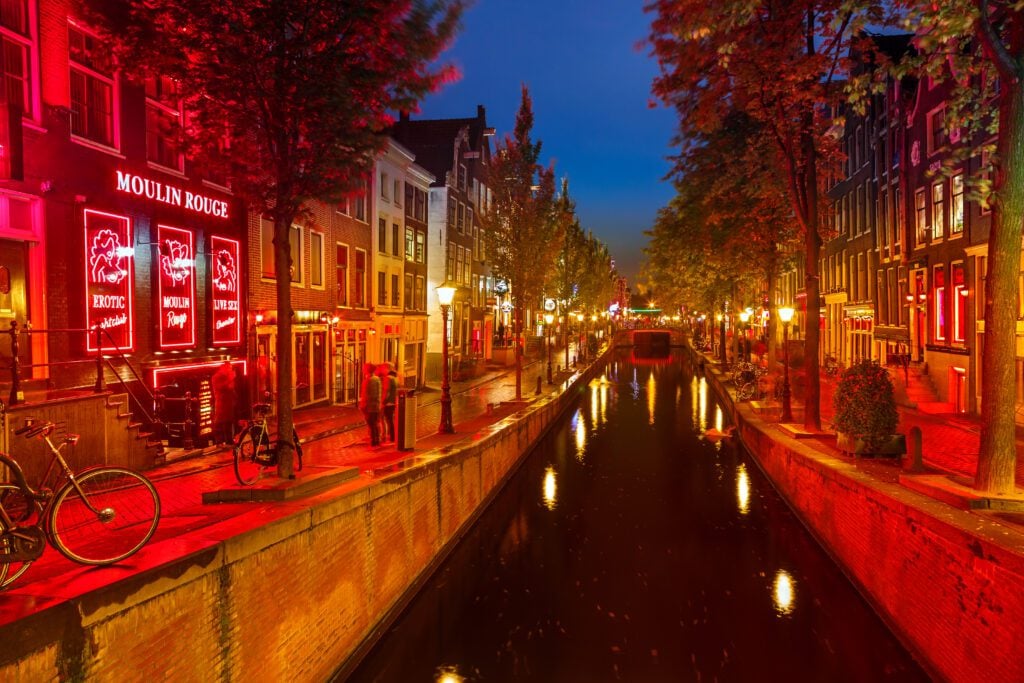Everyone’s heard of Amsterdam’s infamous Red Light District.
Maybe you’ve been there as a tourist, or perhaps you’ve been there to… purchase a service.
But have you ever wondered why the lights are red?
The answer to this question dates back decades — even centuries. To cover that, let’s quickly examine some of the Red Light District’s history.
A short and sweet history of the Red Light District
Back in the 13th century, when de Wallen first came to be, it was a time when buying a house would cost you one sheep.
We didn’t have the immediate distraction of modern technology, so the city’s entertainment options were limited, to say the least. So what could sailors do? Park their boats and head straight to the “ladies in red,” as they were called!

The sailors would have fun with the ladies, grab some drinks (hydration ✅), and then head straight to the Oude Kerk (Old Church) to ask for forgiveness for their sins. That’s why the church is there, so sailors could act as if nothing had happened.
Apparently, hedonism is as old as organised religion.
So, why is Amsterdam’s Red Light District red?
Entertainment wasn’t the only thing lacking back in the day. Have you ever heard of this little thing called “healthcare“? Well, that was a part of life that didn’t really exist yet.
Naturally, working as a sex worker exposes someone to all kinds of people. Sailors were getting all kinds of illnesses at sea, and the ladies were, well, exposed in all the wrong places.

Alright, we won’t sugarcoat it: the lights are red because they hid the symptoms of STIs like syphilis: skin rashes, oozing sores, and even hair loss. Umm….yikes.
The lights are just bright enough that people could find their bearings but dim enough to hide anything…unseemly.
READ MORE | History of Amsterdam’s Red Light District: the intriguing past unveiled
Out of sight, out of mind, apparently. (Perhaps a solid time to remind people to wear protection and get tested regularly. It’s better for everyone!)
Misconceptions about the Red Light District
Now that we’ve broken the ice, why not debunk some flimflam while we have you here?
First, there’s not just one Red Light District in Amsterdam. These streets are found not only in the Netherlands but around the world! The main difference is that in the Netherlands, sex work is legal and regulated, which gives the Netherlands this mythologised, touristic appeal.
Secondly, these districts are not only focused on female street prostitution. For example, the big, famous Red Light District in Amsterdam (the one you know about) also has bars, sex museums, and theatres. As you now know, you can even go there for your Sunday Service. 🙏
READ MORE | Sex work is work: etiquette and a guide to Amsterdam’s Red Light District
The third and most important point we want to clarify is that these sex workers deserve the same treatment as any other workers.
The commercialisation of this district created a weird, product-focused view of these women. But sex work is still work.
Why legalise sex work?
Sex workers are employees, and they deserve the respect of any other. The upside of legalising sex work is that it offers at least a little more protection for sex workers.
For example, regular inspections are carried out, and healthcare and social service organisations help sex workers who need it, says the Municipality of Amsterdam.
It also means that if anything goes wrong during their work, sex workers can report this to the police without worrying about being punished themselves.
Generally, the municipality acknowledges any legal work, so sex workers get benefits and assistance like any other legal business.
Clearly, this is a service that people have always pursued. Luckily we have STI tests now! 🩺
Did you know this is why the lights are red? Do you have any more interesting facts about the Red Light District? Tell us in the comments below!
